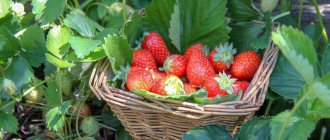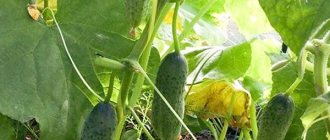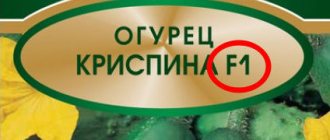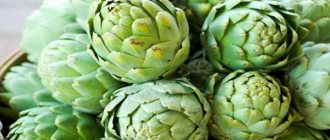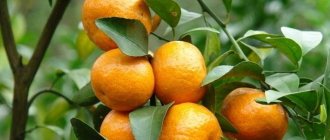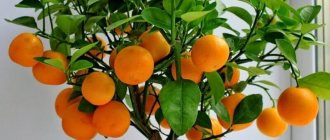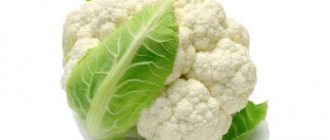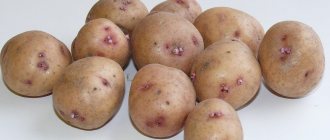Description and characteristics of the variety
The cucumber variety Artist F1 is:
- Its ultra-early ripening period will appeal to even the most impatient summer residents. The fruits ripen in the period from 35 to 40 days, after the appearance of the first shoots.
- Indeterminate, that is, the growth of plants is not limited, this determines the need for garter and the formation of bushes.
- Parthenocarpic, or self-pollinating, which makes it possible to use film greenhouses, balconies or open ground for its cultivation.
- Vigorous, the plant is also characterized by medium branching, female type of flowering, it has dark green large leaves.
- Medium-yielding, with proper agricultural technology, the yield of the hybrid is 9 kg/m. sq. landings.
Fruit characteristics
The fruits of the Artist F1 cucumber variety are distinguished by:
- thick skin containing large frequent pimples and having white pubescence;
- cylindrical fruit shape;
- small size about 12 cm;
- average fruit weight from 90 to 95 g;
- crispy and aromatic pulp, which lacks bitterness;
- Hybrid nodes can contain up to 2 fruits.
Description of the hybrid Artist F1
The producer of the hybrid is BEJO ZADEN (Holland), known on the Russian market for high-quality seed products. In 2009, Artist F1 applied for admission; in 2010, he was registered in the State Register catalog. Recommended in all regions of the country, grown on open ground ridges and in film shelters.
The cucumber is valued by amateur gardeners and farmers who grow the hybrid for sale. It is distinguished by good marketable yield, attractive appearance of greens, and suitability for transportation.
Main characteristics
The bushes are powerful, with very strong vines and a well-formed root system. The hybrid belongs to the group of indeterminate cucumbers; the length of the central shoot is not limited (over 2 meters). The plants are vigorous, medium-branched, with large leaves of rich green color.
On a note! Artist F1 is a cucumber with predominantly female flowers. In any season, with proper care, a harvest is guaranteed.
At the genetic level, the characteristic of parthenocarpy is laid down, that is, the plant does not require pollination. In the pulp of greens, the seeds almost do not ripen and are in their infancy. Therefore, there is no coarsening of the skin or seed coats, and cucumbers are also not prone to yellowing and overgrowth. Hybrid Artist is a form prone to the bouquet type of ovary formation, but the characteristic appears only with full compliance with agricultural technology and good nutrition. The number of ovaries in the sinuses is no more than 3-4 pieces.
A hybrid of early species, the beginning of harvesting of greens occurs on the 40th day after the appearance of full shoots. Gherkin-type cucumbers, green in color with slight spots and short whitish stripes. The length does not exceed 10 cm, the weight of greens is 90-95 grams. The skin is dense, thick, with large tubercles and thick white pubescence.
The pulp is dense, juicy, there are no seeds or a very small amount (undeveloped). Emptiness and bitterness are absent at the genetic level. White-thorn cucumbers are usually used for salads, but Artist’s greens are suitable for pickling, pickling, and canning. The fruits retain their presentation and taste for a long time and are suitable for long-term transportation.
Advantages and disadvantages
Russian summer residents have been growing the first generation hybrid Artist F1 for almost ten years. Over the years, he has shown himself excellently in various regions of the country. He is valued for the following qualities:
- early release of greens;
- long fruiting period;
- high yields (up to 8.5 kg per square meter in open ground, up to 11 kg per square meter in greenhouses and greenhouses);
- tendency to bunch type of ovary formation;
- resistance to various diseases (viral cucumber mosaic, olive spot);
- parthenocarpy;
- excellent taste of fruits, lack of bitterness in greens;
The hybrid is resistant to temperature changes and is easy to maintain. Shows high collection rates on open ground ridges, in shelters, and in greenhouses. It is characterized by keeping quality and excellent presentation.
One of the disadvantages noted is the high cost of seed material of foreign hybrids. Every year we have to purchase seeds, since the plants of the first generation of hybrids labeled F1 do not retain their parental characteristics.
Photo
Look at the photo hybrid Artist :
Harvesting
The fruits are considered ripe and ready for harvesting when they reach a size of 9–10 cm. Cucumbers grow quite quickly, so it is better to collect them daily, or at least once every two days. It should be noted that overripe fruits not only lose their taste, but also significantly delay the growth of a new ovary.
The “Artist” cucumber has won the love of many summer residents because it ripens early, grows in a greenhouse and in the garden, and bears fruit in almost all regions. Now you know the rules for growing it and, with a little effort, you will certainly be able to please your family with fresh and crispy green fruits.
Advantages and disadvantages
The cucumber variety Artist F1 has the following advantages:
- ultra early ripeness of fruits;
- long fruiting;
- excellent seed germination;
- absence of yellow areas in ripened fruits;
- good yield;
- resistance to diseases such as common mosaic, cladosporiosis, powdery mildew;
- tolerance to insufficient lighting;
- a high-quality presentation that allows the hybrid to be cultivated for sale;
- resistance to lack of moisture and hot weather;
- good ability to recover from the effects of soil drying out;
- versatility of fruit use.
Cucumber Artist F1 is a worthy variety, differing, however, in a number of features that can be considered as disadvantages:
- has an average yield for a hybrid; with proper agricultural technology it rarely exceeds 9 kg/sq. m.;
- requires the correct fertilization scheme.
The correct technique for growing the Artist F1 variety can minimize the disadvantages described above.
Reviews
“We planted Artist F1 cucumbers last year. I really liked them. And the growing technology is not at all different from caring for other varieties of cucumbers: water them on time, loosen them, remove weeds and periodically feed them. And then you will be guaranteed a good harvest.” Olga, 47 years old.
“I’ve been growing Artist F1 cucumbers in my dacha for several years now. The fruits are smooth and beautiful - everything is just right. The pulp is very tasty and juicy. And thanks to the rich harvest, it is possible to grow greens for sale. I'm new to this and have often turned to video instructions. I advise." Tatyana, 38 years old.
We will be glad if the description, characteristics and reviews of cucumbers of the “Artist F1” variety are useful to you.
Landing
Artist F1 cucumbers can be planted using pre-prepared seedlings, or plants can be grown from seeds directly in open ground. Let's take a closer look at these methods.
Seedling method
It is recommended to sow seeds for growing seedlings in early April. To do this, you can use special pots (or cassettes) and soil. It should be a mixture containing peat, humus and sawdust in a ratio of 2:2:1. The composition should also include fertilizers (per 10 liters of soil) - nitrophoska (30 g) and wood ash (40 g).
Each container is filled with soil prepared as described above, then up to 2 seeds are placed in it. Seedlings should be watered periodically. After about 30 days, it appears about 3 full-fledged leaves, after which the plants can be planted in a permanent place.
Direct sowing of seeds into the ground
It is important to take into account the unpredictability of the weather in recent years, when after the onset of warm sunny days and the establishment of night air temperatures that promote the growth of heat-loving vegetable crops, cold weather returns again. By this time, some summer residents have already managed to sow cucumbers. As a result, their germination occurs very slowly. They can also become damp and unsuitable for growing. And sowing a new batch leads to a waste of time.
To avoid such a situation, it is necessary to wait until the soil warms up to +15°C, while the daily air temperature should be above +21°C.
Sowing seeds in the soil should be done at a depth of 2 to 3 cm. The distance between plants should be 10 cm. The soil must be well moistened. To protect the plantings from low air temperatures at night, they are covered with film or agrofibre.
Reference! The “noses” of the sown seeds should be directed downwards, then the first shoots will appear faster, in the period from 5 to 8 days after planting.
Growing
In order for the plants to grow strong and please the vegetable grower with a harvest, it is necessary to make at least a minimum of effort. Agrotechnical measures include: soil preparation, irrigation, fertilizing, tying, pinching, pest and disease control. Read how to tie cucumbers in a greenhouse here.
Soil preparation
It is better to prepare the beds in the fall. Before loosening, organic fertilizers should be applied in an even layer over the area. This can be humus, compost, chicken droppings, peat and even leaf soil. After this, you can start digging the area. You can loosen the soil well and efficiently only with a vertically placed shovel. If the position is inclined, then the depth of the loose layer will decrease. There is a practice of growing cucumbers without loosening. Then the seeds are sown in a layer of scattered compost.
Cucumbers are fed with chicken manure.
If you don’t dig up the soil, the weeds are not destroyed, and their seeds germinate instantly. You will have to additionally use herbicides.
In the spring, before planting seedlings, it is necessary to crush large lumps and clods. And loosen with a grappling hoe to a depth of 20 cm.
Precursor plants
Some plants are competitors in the food chain. They may have identical diseases. Therefore, before planting cucumbers, it is necessary to correctly identify the predecessors and not sow greens after them. And you can plant cucumbers after potatoes, legumes, tomatoes and corn. The artist can tolerate a little shading. Therefore, corn and cucumbers can be combined in a planting area. And even place greenery bushes under trees with a sparse crown.
Preparing the soil before planting crops
Fertilizer application
The artist is very picky about soil fertility. In areas poor in humus, yields will be significantly lower than in fertilized areas. Therefore, since the fall, before digging, they try to add humus. Up to 100 kg, but not less than 80 kg per ten square meters of area. If there is no organic fertilizer, then replenish the soil with useful substances for the same area:
- Potassium salt – 250 grams. Increases plant immunity to adverse environmental factors. Plants can more easily tolerate drought;
- Superphosphate – 400 grams. Affects root growth and accelerates the ripening of cucumbers;
- Ammonium nitrate in spring (about 200 grams). Nitrogen accelerates the growth of green mass.
Ammonium nitrate accelerates the growth of green mass of plants
Excessive application of calcium, potassium, sodium, and ammonium nitrate leads to delayed flowering. Plants become pampered and lose immunity to diseases.
Seed preparation
It is better to warm up the seed material before planting. And in order to protect against bacterial diseases, they are treated with streptomycin (500 thousand units per 1 liter of water). The seeds are kept in it for 2 days. We must not forget about soaking and germination before planting. But in the event that the seeds are not pre-treated by the manufacturer. Then they are pink or green.
Before planting, cucumber seeds of the “Artist” variety must be germinated
Wet seeds germinate a week earlier than dry ones and the yield of plants obtained from them is slightly higher. The duration of the procedure is from 8 to 12 hours. After this, germination begins at a temperature of 20 degrees. The seeds are placed on damp gauze. If it reaches 10%, you don’t have to wait for the final result, but start sowing immediately.
Such seed material can only be sown in moist soil. If the soil is dry, the planting site needs to be moistened.
In the open ground
In the area, when the desired soil temperature has reached, which is 15 degrees, they begin to plant seedlings or seeds.
When sowing, you can put up to 150 grams of wood ash or the same amount of humus in each hole. The distance between rows in the greenhouse should be about 100 cm, and the gap between plants should be 10 cm. Planting depth is 1.5 - 3.0 cm. When two true leaves of the Artist appear, they are thinned out, removing weak ones so that the distance between the shoots is about 30 cm. Carry out the first fertilizing with mullein solution. After 10–12 days you can feed it a second time, and then after the same period of time a third time.
Wood ash is a mineral fertilizer
Cucumbers love moisture very much. Therefore, you should not forget to water them. The watering schedule is every three days, and the norm is 300 liters per 10 square meters.
When loosening or harvesting the crop, it is not advisable to touch or move the lashes from place to place. Therefore, it is better to grow the hybrid in open ground also on a trellis.
In greenhouses
In greenhouses, they try to plant Artist seedlings. Then the harvest can be harvested earlier. According to the instructions on planting dates on the packaging, the hatched, pre-wetted seeds are planted in pots. At their location, the light regime and temperature are maintained at 20–22 degrees, gradually reducing to 18. Fifteen-day-old seedlings are planted in greenhouses. Planting scheme, according to the instructions on the package 30x100. The cultivation technology is the same as in open ground. There should be slightly increased air humidity in the greenhouse. Pumpkin plants love this. This article will tell you about preparing the soil in a greenhouse for cucumbers in the fall.
Features of growing a hybrid indoors:
- Artist is an indeterminate variety. Therefore, it requires pinching and lifting onto a trellis. Then the greens are well illuminated by the sun, and it is much easier to collect them. In addition, the lashes are not injured;
Pinching is the process of removing shoots that interfere with the further development of the plant.
- Watering should be regular, as should fertilizing with mullein or fermented and diluted chicken droppings (once every 8–10 days). Read how to water cucumbers here.
You should not leave traces of mullein on plants. They are washed off the leaves by sprinkling with warm water.
Care
The main procedures for caring for Artist F1 cucumbers are:
- Loosening and weeding beds.
- Tying up bushes. From the reviews of gardeners it follows that the variety is characterized by strong branching, which is why the plants need to be tied up. This prevents tangling of branches, infection with fungal diseases, and promotes ventilation. It is also necessary to pinch the side branches of the bush and the main stem, at a height of 0.5 and 2 m, respectively (see figure).
- Watering. The hybrid is not afraid of short-term drought, but watering with cold water is contraindicated for it. Plants should be watered directly at the roots, using settled warm water.
- Feeding. During the growing process, fertilizing must be done approximately 5 times. The first is when full-fledged leaves appear, if the seeds are sown immediately in a permanent place. To do this, you can use the same composition that is used to fertilize seedlings. Next, alternating mineral and organic fertilizers are used for feeding. It is also recommended to use bird droppings, mullein or ash. good reviews about special complex products for these purposes: “Izabione”, “Megafol”, Plantafol”, “Terraflex”.
- Formation of bushes, which is very important for greenhouses. The plant is formed into 1 stem, while its top is pinched. In this way, growth and fruit formation can be controlled.
- Timely collection of ripe fruits, an extremely important procedure for a hybrid. Failure to comply with this rule results in a decrease in plant productivity.
Brief information about the variety
- Fruits and bushes: the plant is medium-sized, with inactive branching. The fruits are medium size, red in color.
- Productivity: high, especially when grown in greenhouse conditions. 4-5 kg of fruits are harvested from one bush per season.
- Resistance: the variety is resistant to most diseases typical for this crop. Additional preventive measures will help avoid late blight, gray rot and blackleg.
- Distribution: the hybrid is suitable for cultivation in all regions of the country. In northern regions, such as Siberia, the Urals, and Krasnoyarsk, it is recommended to use exclusively the seedling method.
- Area of application of the fruit: universal, vegetables are used fresh or for preservation.
- Planting: carried out in April-May, using seedlings or without seedlings according to the pattern of 20-30 cm between plants, and 70-90 cm between rows. The time for sowing seeds depends on the region of germination.
- Soil: loose, fertile, rich in nutrients. Particular attention is paid to soil acidity.
- Care: you need to pay attention to timely watering and fertilizing, as well as bush formation and pinching.
- Ripening period: early – 50-60 days from the appearance of the first shoots. Fruiting is friendly and abundant. Storage – up to 30 days in a cool place.
